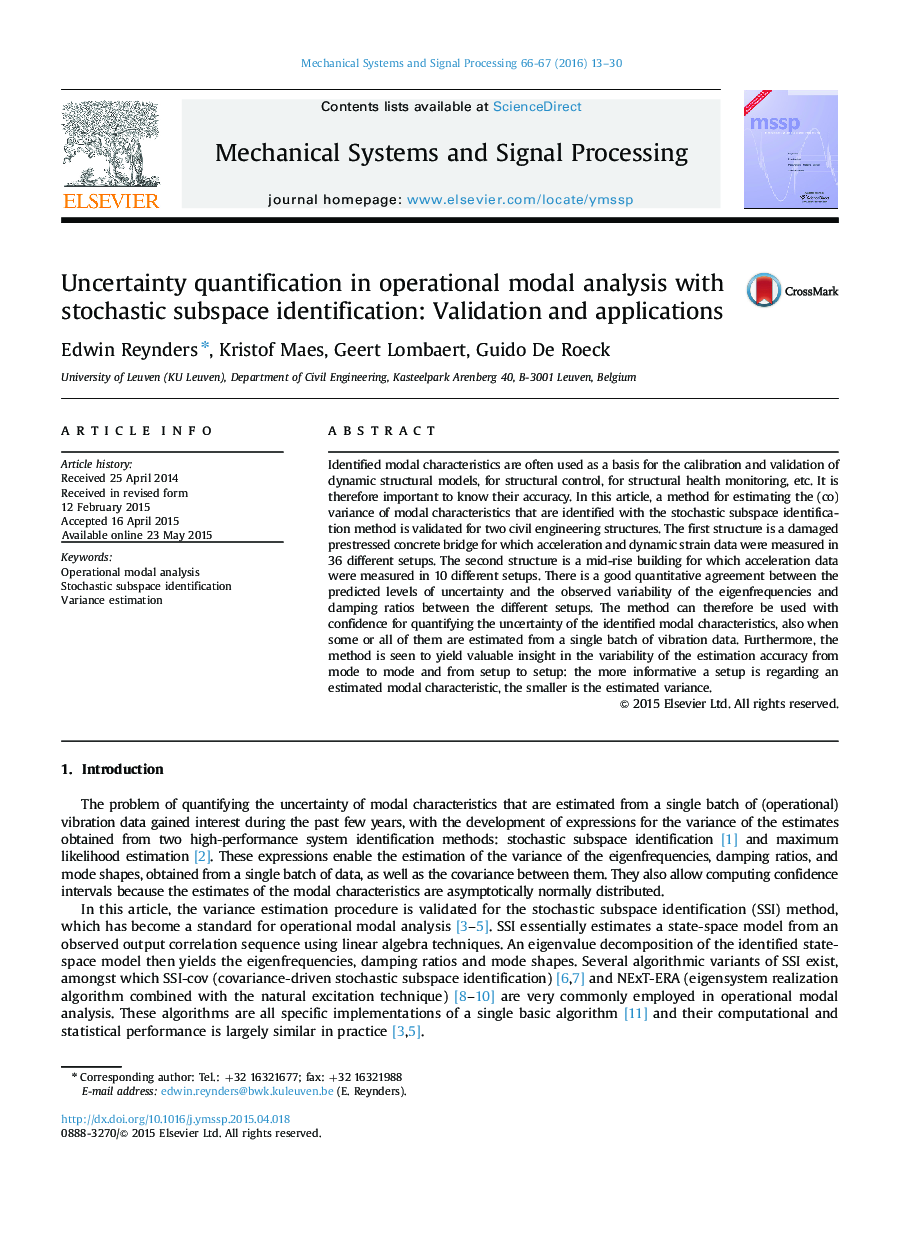| Article ID | Journal | Published Year | Pages | File Type |
|---|---|---|---|---|
| 559114 | Mechanical Systems and Signal Processing | 2016 | 18 Pages |
•A method for estimating the (co)variance of modal characteristics that are identified with stochastic subspace identification is validated.•There is a good agreement between the predicted levels of uncertainty and the observed variability of eigenfrequencies and damping ratios that are identified from different batches of data obtained under similar conditions.•When the experimental conditions for different batches of data are not similar, the method consistently yields smaller variance values when the data is more informative on the estimated modal characteristic.
Identified modal characteristics are often used as a basis for the calibration and validation of dynamic structural models, for structural control, for structural health monitoring, etc. It is therefore important to know their accuracy. In this article, a method for estimating the (co)variance of modal characteristics that are identified with the stochastic subspace identification method is validated for two civil engineering structures. The first structure is a damaged prestressed concrete bridge for which acceleration and dynamic strain data were measured in 36 different setups. The second structure is a mid-rise building for which acceleration data were measured in 10 different setups. There is a good quantitative agreement between the predicted levels of uncertainty and the observed variability of the eigenfrequencies and damping ratios between the different setups. The method can therefore be used with confidence for quantifying the uncertainty of the identified modal characteristics, also when some or all of them are estimated from a single batch of vibration data. Furthermore, the method is seen to yield valuable insight in the variability of the estimation accuracy from mode to mode and from setup to setup: the more informative a setup is regarding an estimated modal characteristic, the smaller is the estimated variance.
